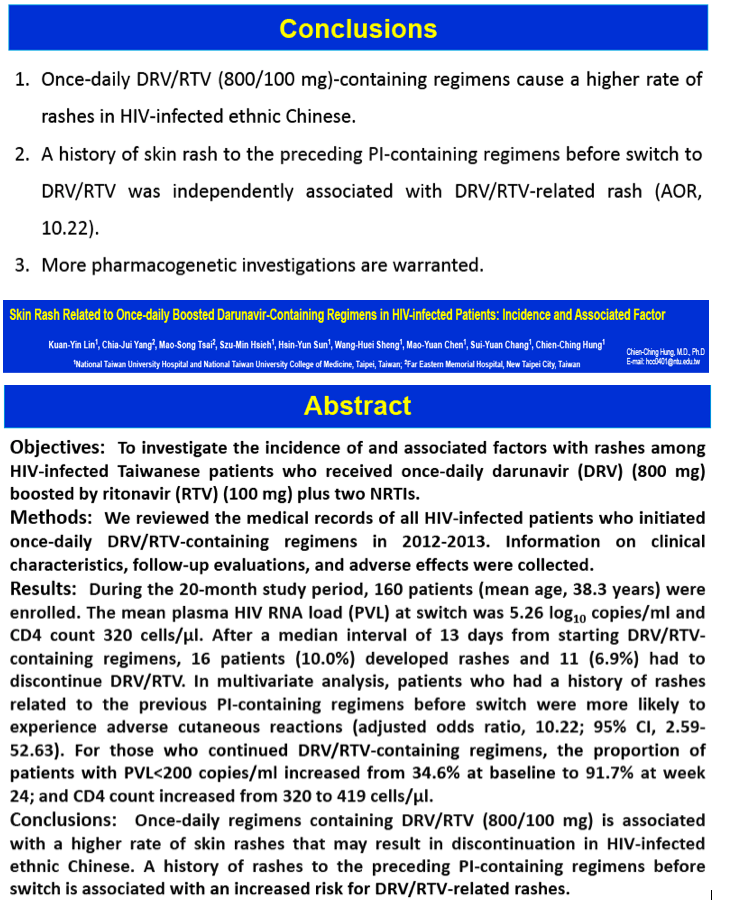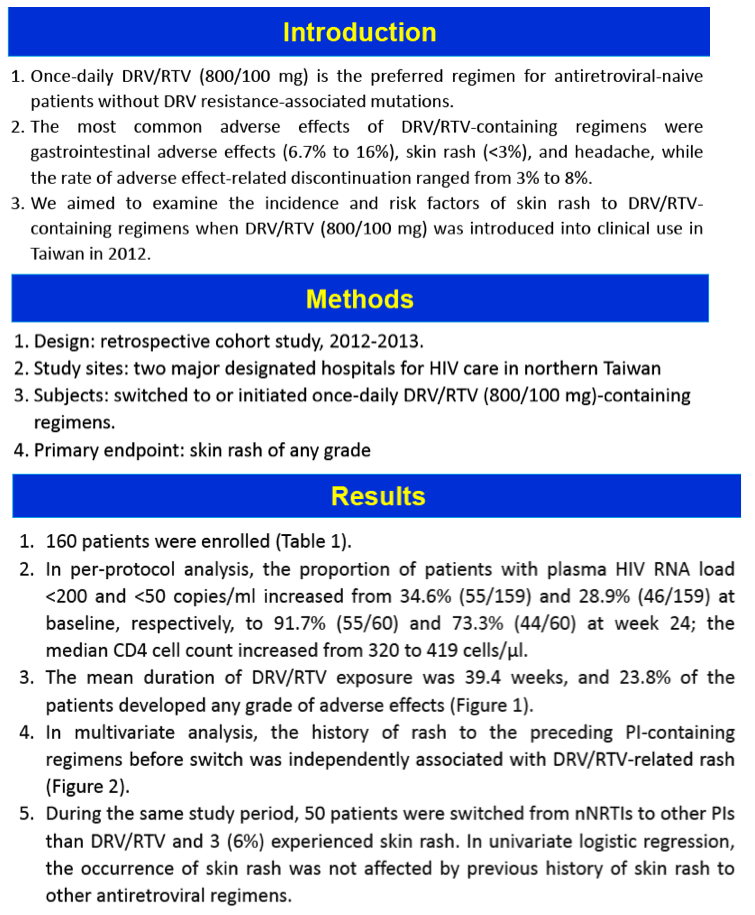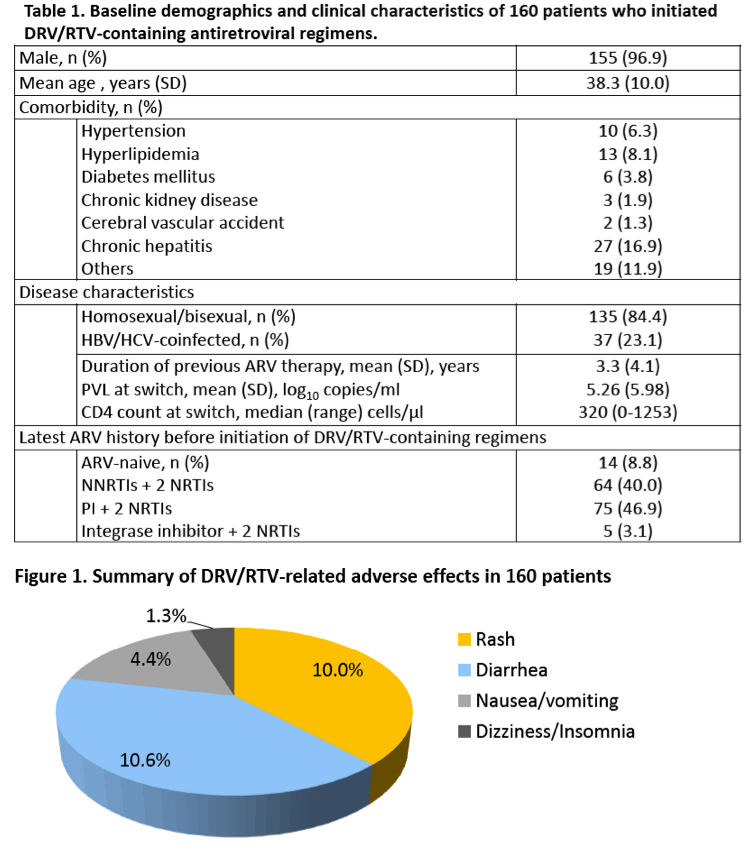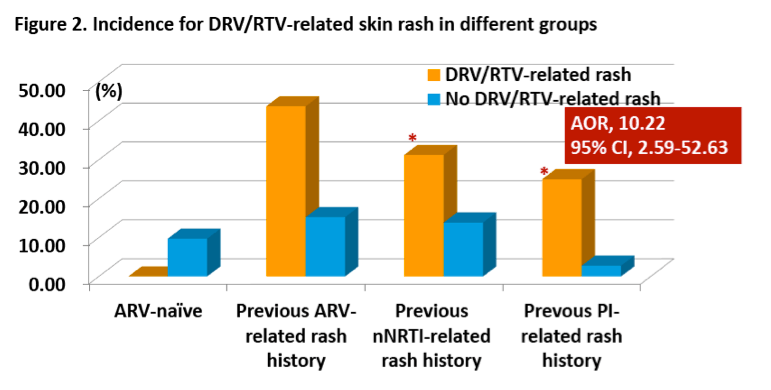 |
 |
 |
| |
Rash in 10% of Taiwanese Starting Once-Daily
Darunavir--and 7% Dropout Rate
|
| |
| |
IDWeek, October 2-6, 2013, San Francisco
Mark Mascolini
Rash developed in 10% of ethnic Chinese patients in Taiwan starting once-daily darunavir/ritonavir, and 7% had to stop the protease inhibitors (PIs) as a result [1]. Previous PI-related rash predicted rash with darunavir/ritonavir in this chart review.
Once-daily (800/100-mg) darunavir/ritonavir is licensed for antiretroviral-naive adults or treatment-experienced adults without darunavir-linked mutations. Product information indicates that rash of any grade developed in 10.3% of people taking darunavir/ritonavir in clinical trials, but severe skin reactions emerged in only 0.4% and only 0.5% stopped the PIs because of rash. To determine how often rash develops in clinical practice in a Chinese population, Taiwanese researchers conducted this retrospective study of people starting once-daily darunavir/ritonavir in 2012 and 2013. The primary endpoint was rash of any grade.
The study involved 160 patients, 155 of them men and 135 men who have sex with men. Age averaged 38.3 years. Among 158 people with available treatment history, only 14 (9%) were antiretroviral-naive when they started darunavir/ritonavir, while 75 (47%) had taken a PI regimen, 64 (40.5%) a nonnucleoside regimen, and 5 (3%) an integrase inhibitor. Among antiretroviral-experienced people, duration of the previous regimen averaged 3.3 years, viral load at the switch to darunavir/ritonavir averaged 5.26 log10 copies (about 182,000 copies), and median CD4 count at the switch stood at 320 (range 0 to 1253). Thirty-seven people (23%) had hepatitis B or C coinfection.
Proportions of cohort members with a viral load below 200 and 50 copies climbed from 34.6% and 28.9% when darunavir/ritonavir began to 91.7% and 73.3% after 24 weeks of treatment. During that time, median CD4 count jumped from 320 to 419.
During follow-up rash developed in 16 people (10%) a median of 13 days after starting darunavir/ritonavir. Diarrhea developed in 17 people (10.6%), nausea or vomiting in 7 (4.4%), and dizziness or insomnia in 2 (1.3%). Eleven people (6.9%) had to stop darunavir/ritonavir because of rash. Multivariate analysis determined that a history of rash to a prior PI regimen raised odds of rash to darunavir/ritonavir 10 times (adjusted odds ratio 10.22, 95% confidence interval 2.59 to 52.63).
During the study period, 50 people switched from a nonnucleoside regimen to PIs other than darunavir/ritonavir. Rash developed in 3 of those 50 (6%) and was not associated with a history of rash to other regimens.
The investigators called for pharmacogenetic study to determine whether Chinese people may be more susceptible to darunavir-associated rash.
In the 700-person international ARTEMIS trial of once-daily darunavir/ritonavir versus once-daily lopinavir/ritonavir, grade 2 to 4 rash possibly related to treatment developed in 3% randomized to darunavir and 1% randomized to lopinavir, a nonsignificant difference (P = 0.27) [2]. Eighty-two people in ARTEMIS were Asian, but the researchers did not report race-based side effect incidence.
References
1. Lin KY, Yang CJ, Tsai MS, et al. Skin rash related to once-daily boosted darunavir-containing regimen in HIV-infected patients: incidence and associated factor. IDWeek 2013. October 2-6, 2013. San Francisco. Abstract 174.
2. Mills AM, Nelson M, Jayaweera D, et al. Once-daily darunavir/ritonavir vs. lopinavir/ritonavir in treatment-naive, HIV-1-infected patients: 96-week analysis. AIDS. 2009;23:1679-1688.




|
| |
|
 |
 |
|
|